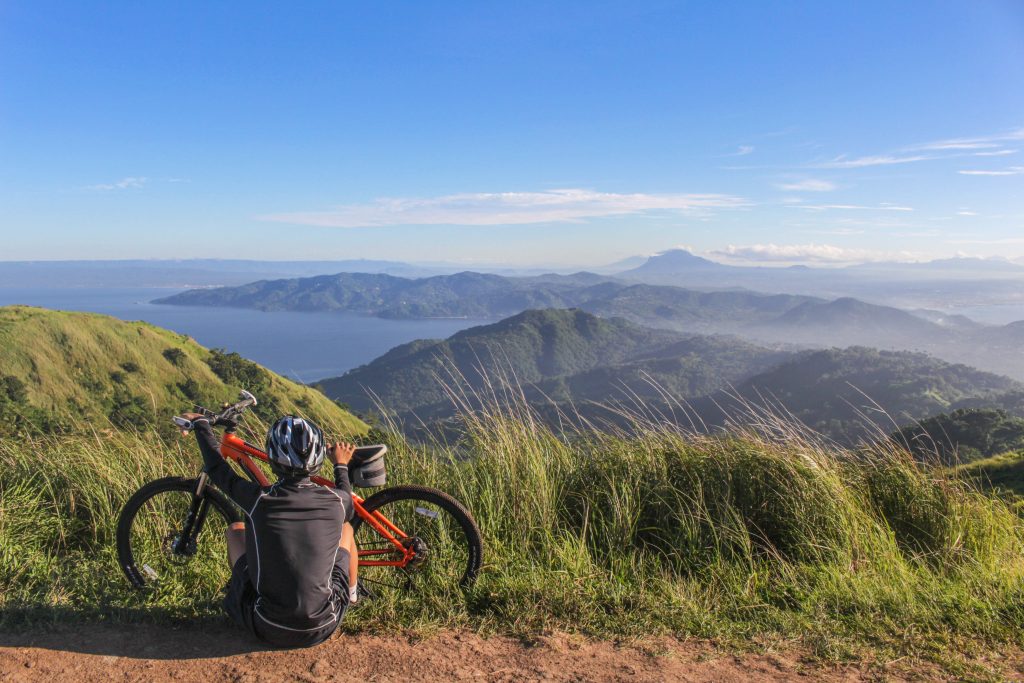Mountaineering and climbing are thrilling and difficult outdoor pursuits that entail ascents of mountains, cliffs, and other landscape features. There’s always something new to learn and master, whether you’re an expert climber or just getting started. This manual is intended to give you an overview of the fundamentals of climbing and mountaineering, including the tools you’ll need, the various types of climbing, and the skills and methods you’ll need to master.
When starting out in climbing and mountaineering, one of the first things you’ll need to think about is the equipment you’ll need. Items like climbing boots, harnesses, helmets, carabiners, and ropes fall under this category. Additionally, you’ll need to spend money on a sturdy backpack to carry all of your supplies, including food and water.
It’s time to start learning the fundamentals of climbing and mountaineering after you have your gear. Rock climbing and ice climbing are the two main categories of climbing. While ice climbing includes scaling frozen waterfalls and other icy elements, rock climbing entails conquering naturally occurring rock formations. To be safe and successful, you’ll need to learn how to use your equipment appropriately for both forms of climbing, which each call for unique abilities and methods
Mountaineering and climbing may both be risky activities, therefore you should always take the required safety precautions. This entails knowing the right methods for climbing and belaying as well as for using your equipment. Being physically healthy and having a thorough awareness of the environment you’ll be climbing in are also essential. A enjoyable and demanding exercise that can take you to new heights and give you a sense of accomplishment is climbing and mountaineering. You’ll be well on your way to scaling new heights and experiencing the thrills of climbing and mountaineering with the correct gear, instruction, and attitude.
Equipement
Overview of Necessary Equipment
It’s critical to have the proper gear when climbing and mountaineering for safety and success. You’ll need some basic equipment, such as:
Shoes specifically made for climbing: These shoes give you the traction and stability you need while climbing. They should give adequate support for your feet and ankles and should fit snugly without being too tight.
Harness: To be attached to the rope, you must wear a harness, which is a device worn around the waist and legs. It’s crucial for security and enables you to belay, or secure, your climbing partner’s rope.
Helmet: A helmet is a crucial piece of safety gear that will shield your head from collisions and flying objects.
Metal loops known as carabiners are used to attach ropes to harnesses and other pieces of equipment. They are employed for a variety of purposes and are available in various sizes and shapes.
Ropes: You can protect yourself and use ropes to help you climb and descend the mountain. They are available in various lengths and diameters and can be manufactured of various materials.
Backpack: A sturdy backpack is necessary for transporting all of your equipment, as well as supplies like food and water.
Importance of Proper Equipment
One cannot stress the value of having the right tools. It will not only make climbing and mountaineering more pleasurable, but it will also keep you safe. It will be simpler for you to climb and manage the mountain if you have the right equipment to help and protect you. It’s important to spend money on high-quality equipment that is suitable for the type of climbing and mountaineering you’ll be performing because not having the necessary gear can put you at risk for accidents and injuries.
Tips for Purchasing Equipment
It’s crucial to conduct research before buying climbing and mountaineering equipment and to spend money on high-quality equipment. The following advice will assist you in making wise decisions:
To discover the ideal fit, try on a variety of climbing shoe brands and designs.
Choose a harness that has a number of attachment points, is adjustable, and is comfortable.
Pick a helmet that fits tightly, is light, and has good ventilation.
Invest in a range of carabiners for various uses.
Purchase a rope that is suitable for the type of climbing you intend to conduct.
Choose a backpack with adequate room for all of your belongings, is sturdy, and is well-padded.
Types of Climbing
Rock Climbing
Description
Ascending naturally occurring rock formations, such as cliffs and mountains, constitutes the climbing technique known as rock climbing. Rock climbing can be done in a variety of ways, such as sport climbing, traditional climbing, and bouldering. Traditional climbing uses detachable protection, bouldering involves climbing short routes without a rope, and sport climbing involves routes with pre-placed bolts for protection.
Skills and Methods Needed
You must master a number of abilities and methods to become a proficient rock climber. These consist of:
Using the proper belay techniques, you may secure the rope for your climbing companion.
Learning various climbing methods, like as utilizing your hands and feet to hold and balance the rock as you go up and down, is necessary.
Knowledge of various knots is necessary for securing the rope to the harness and other equipment.
Route-finding: It’s crucial for security and achievement to be able to interpret rock patterns and determine the best route to the summit.
Ice Climbing

Description
A style of climbing known as “ice climbing” is climbing up frozen waterfalls and other icy terrain. It is a difficult and risky operation that calls for specific tools and methods. Alpine ice climbing and water ice climbing are the two primary subtypes of ice climbing. While water ice climbing entails scaling ice-covered cliffs and frozen waterfalls, alpine ice climbing involves scaling glaciers and frozen mountains.
Skills and Methods Needed
You must master a number of abilities and methods to become a proficient ice climber. These consist of:
Using crampons and ice axes properly is crucial for climbing on ice because they offer support and grip.
Swing methods: For climbing up and down the ice, it’s crucial to know how to properly swing the ice axes and crampons.
Ice protection: It’s important to understand how to use ice screws and other protection and how to install and remove them.
Route-finding: For safety and success, it’s crucial to be able to interpret ice formations and identify the best route to the summit.
Safety
Precautions to Take
Mountaineering and climbing can be hazardous hobbies, thus it’s important to take the required safety precautions. This comprises:
always donning the proper safety equipment, such a helmet and harness.
Understanding how to use all of your tools, including the rope and carabiners.
keeping an eye on the weather and other factors, and modifying your plans as necessary.
knowing the appropriate routes and any hazards, as well as being familiar with the region you’ll be climbing in
Make careful to always climb with a partner, and designate one person as the belayer.
Importance of Proper Training and Techniques
For climbing and mountaineering to be safe, the right training and skills are required. This entails mastering the right belaying technique as well as knots and equipment usage. It’s also crucial to comprehend the right climbing skills, such as how to grasp and balance on the rock or ice.
Understanding the Environment
The environment you’ll be climbing in must be understood for safety purposes. Understanding the weather, the kinds of rock or ice you’ll be climbing, and any potential hazards are all part of this. It’s also crucial to be familiar with the area and aware of the best routes to take.
Physical Fitness
Importance of Being Physically Fit
Strength, endurance, and flexibility development should be prioritized when practicing for climbing and mountaineering. Here are a few training pointers:
including aerobic exercises to increase endurance, such cycling or jogging.
weightlifting helps increase leg and arm strength.
stretching for increased flexibility and injury prevention.
Including climbing in your exercise regimen, whether outdoors or indoors.
Training Tips
The environment you’ll be climbing in must be understood for safety purposes. Understanding the weather, the kinds of rock or ice you’ll be climbing, and any potential hazards are all part of this. It’s also crucial to be familiar with the area and aware of the best routes to take.
Mindset
Positive Attitude
Climbing and mountaineering require an optimistic outlook. It can be a demanding and stressful exercise, but maintaining a positive outlook will help you stay motivated and conquer challenges.
Setting Goals
Setting goals is also important for climbing and mountaineering. It’s helpful to have something to work towards, whether it’s climbing a specific mountain or mastering a new
In this guide, we’ve covered the basics of climbing and mountaineering, including the equipment you’ll need, the different types of climbing, and the skills and techniques you’ll need to master. We’ve also discussed the importance of safety, physical fitness, and mindset when it comes to climbing and mountaineering.



